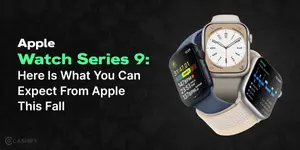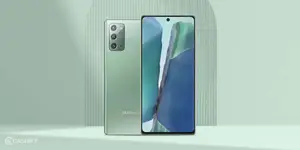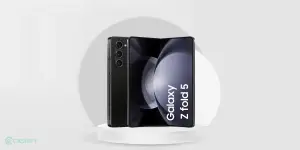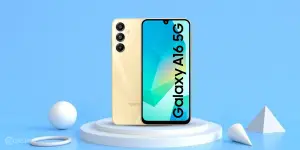Are you feeling overwhelmed when upgrading your TV due to various TV display technology options? If yes, you are at the right place. This blog post is all about various kinds of TV display technology. In today’s digital and social media-energized era, a TV is no more a luxury but is a necessity in every home. Before a few decades, there were limited choices for TV display technology. Therefore, decision-making was simple, like choosing a black & white TV or colour TV?
However, today the scenario is completely changed. There are various TV display technology options available, making decision-making tough. Whenever you visit any electronic store to purchase a new TV, you will be bombarded with jargon such as QLED, OLED, LED, Nano Cell, LCD, etc.
If you have ever experienced such a problem or somehow you can relate to it, don’t get panic. This article will shed light on different kinds of TV display technologies available in the market and their differences.
Read on to understand the difference between various TV display technology QLED vs OLED, OLED vs LED, Nano Cell vs OLED, OLED vs LCD, etc.
Also read: Best QLED TVs You Should Consider Buying
TV Display Technology: LCD
LCD stands for Liquid Crystal Display. It is a particular flat panel that either allows or blocks the passage of light. In this technology, liquid crystal technology is used. This technology combines liquid crystals and polarizers to create images on the screen.
Generally, LCD TVs have three polarized glass panels known as substrates. It contains liquid crystals in between them. These panels are in red, blue, and green colours. Whenever electric current passes through these substances, the crystals rotate and align to let the light pass through the other substrate. In this way, we can see colours and images.
Features
- High resolution
- Superb colour
- Lack of screen burn-in
- Energy efficiency
Pros & Cons
| Pros | Cons |
| Improved picture due to the use of backlight LEDs | Limited viewing angle |
| Affordable | Not so impressive reproduction of black images |
| Multi-functional capability | Restricted brightness |
| Energy-efficient as compared to older bulb lit and plasma screens | Can suffer from screen lag & blur |
TV Display Technology: LED
Usually, most people think that LED displays are a new format, but the truth is that they have been around for a long time. LED stands for light-emitting diode. LED TVs are an updated version of the LCD generation. When it comes to technology, both LED, and LCD TVs use the same one.
The only difference is that the LCD TVs screen gets illuminated by a fluorescent bulb, whereas several LEDs lights the LED screen.
These TVs can be divided into two subcategories:
- Edge-lit LEDs
- Direct back-lit LEDs.
In edge-lit TVs, TV screens are lit from the outer edges, whereas direct back-lit LED TV screens are backlit by LEDs located directly behind the LED screen.
Features
- Narrower & efficient
- Less energy-intensive
- Improved viewing angle
Pros & Cons
| Pros | Cons |
| Versatile & robust | Difficult to mount on the wall |
| Improved viewing angle & brightness |
Also read: AMOLED vs LCD: Detailed Comparison, Which One Is Better?
TV Display Technology: QLED
QLED stands for Quantum Light Emitting Diode. Nowadays, QLED TVs are one of the most popular in the market. It is one of the variants of LED TV display technology that rely on a backlight. Whenever the LED backlight hits the quantum dots, its microscopic molecules emit different coloured lights.
Features
- QLED screens are last longer, larger, and not susceptible to burn-in.
- The price difference between QLED and OLED is QLED are more affordable than OLED.
- 50 to 100 times brighter than LCDs.
- It is 2X energy-efficient than OLED TVs.
| Pros | Cons |
| Brighter | Long-term durability unknown |
| Affordable | |
| bigger and smaller both sizes are available | |
| Not susceptible to burn-in | |
| Superior contrast ratio | |
| Wider viewing angles |
TV Display Technology: OLED
Featuring next on the list is OLED. It stands for Organic Light Emitting Diode. If you search for the highest quality TV display technology, OLED is the perfect pick. This technology uses organic materials like carbon to produce light when an electric current directly supplies it.
The impressive thing about OLED TV is that it does not need a backlight to illuminate the screen area like LCD and QLED. Therefore, it can be very thin and flexible. OLED TVs produce less heat and consume less power than LCDs and LEDs.
Features
- Thicker and sleeker
- Excellent picture quality and colour display
- Requires no substrates
| Pros | Cons |
| No screen lag or blur | Expensive to manufacture |
| Richer colours & true blacks as compared to any other TV display or monitor | Costly for the consumer |
| Easy to produce | Its pixels burn easily |
| Wide viewing angles | QLED loses brightness much faster than other transparent technologies |
Also read: Samsung TV Plus: Price, Features, And Everything About It
TV Display Technology: Nano Cell
The next on the list is Nano Cell. It is a type of LCD/LED TV from LG. In Nano Cell technology, nanoparticles are used at individual pixels. They absorb unwanted light and enhance the primary red, green, and blue colours on the screen.
As a result, you will experience deeper colours, sharper tones, and an overall wider colour palette that creates natural colours and sharper pictures at all viewing angles.
Features
- No burn-in issues
- The display type is LED backlight
- Colour accuracy is outstanding
- Viewing angle wide
| Pros | Cons |
| Improved colour reproduction from regular | You will not get perfect blacks |
| Excellent for HDR content because of higher pick brightness as compared to OLED TVs | Slightly thicker and heavier than OLED TVs |
| Affordable |
Now, let’s have a quick comparison review of all these technologies
QLED vs OLED
- QLED picture quality usually varies more than OLED
- It is brighter as compared to OLED
- OLED has improved contrast and black level
- OLED has better viewing angles and uniformity as compared to QLED.
- When it comes to resolution, colour, video processing, and other image quality, all these factors are the same.
OLED vs Nano Cell
- OLED has a self-emitting pixels display type whereas Nano Cell has an LED backlight display type.
- It offers a very wide viewing angle, whereas Nano Cell offers wide angles.
- It costs more than Nano Cell
- OLED’s screen thickness is ultra-thin, less than 4mm, whereas Nano Cell screen thickness is between 35mm and 45mm.
- OLED has a very low response time as compared to Nano Cell.
- Both technologies offer the same colour accuracy.
OLED vs LED-LCD
- LED LCD screens are brighter than OLED.
- OLED struggles with the colour volume, whereas LED LCD favours it.
- In all three, the lightning unit is the Pixel unit.
- The structure of LED LCD is quite complex, whereas OLED has a simple structure.
- In LED LCD backlight unit is CCFL, LED whereas, in OLED, it is self-emissive.
Also read: What Is The Difference Between Brand New And Refurbished Phone?
Winding Up
In a nutshell, these are some different types of TV display technologies you will probably explore in any electronic store. Hopefully, this article has cleared your all doubts, and now you understand the basic difference between each, like QLED vs OLED, OLED vs LED, Nano Cell vs OLED, OLED vs LCD, etc. Therefore, the next time you want to upgrade your TV, note down all the desirable points and select the best one you feel.
After reading this article, did you feel to upgrade your TV? Let us know in the comment section below also; you can use the comments area below if you have any other queries.
Also read: TV Buying Guide: How To Choose The Right One?
Do you want to utilize your old smartphone to its highest possibility? Well, Cashify is here to help you. You can sell your phone online or recycle old phone on it.
















